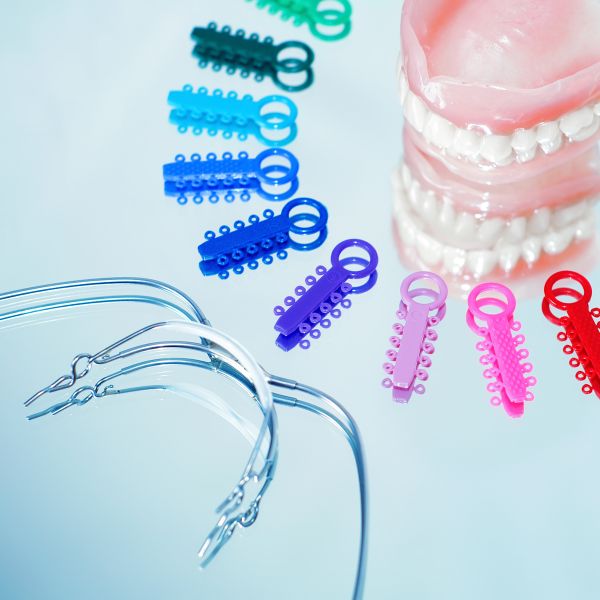How to Fix Your Smile: Clear, Ceramic or Traditional Braces?

When it is time to fix your teeth, gone are the days when the only option was to get traditional metal braces. These devices can be quite bulky, and they are highly visible in the wearer's mouth. That can leave the person feeling even more self-conscious than before the braces were installed.
Things are much different now. There are a handful of devices that can be used to straighten a person's smile, like clear braces, ceramic braces and lingual braces that are much less visible than traditional braces.
Here are three different types of braces that are commonly used to deal with teeth alignment issues.
Different types of braces
1. Traditional metal braces
Despite the fact that many new alternatives have emerged, traditional braces are still the most commonly used orthodontic devices. This is due to the fact these devices remain the most affordable way to straighten teeth. Metal braces have evolved a great deal in recent years, and newer designs are slicker than their predecessors. Patients now have the option of customizing their device with the color of the favorite sports teams or whatever else suits their personal style.
Today's metal braces are less invasive than the bulky contraption people had to wear decades ago that looked like TV antennas. Some modern traditional braces even come with improved components, like heat-activated wires that use the patient's body heat to increase comfort.
Pros
- They are the cheapest way to fix a patient's smile if dealing with alignment issues
- Colored bands and brackets are now available
- Metal braces are more effective than other alternatives
Cons
- They are very noticeable in the wearer's mouth
- Food tends to get stuck in the brackets
- Cleaning these devices can be difficult
2. Ceramic Braces
Ceramic braces are similar to metal braces with only a few exceptions. Instead of using brackets made from metal, these are made out of ceramics and are customized to be the same color as the patient's natural teeth. Instead of the brackets being connected with metal wires, ceramic braces often come with clear wires, making them very hard to detect.
Pros
- A more discreet option
- More effective than clear braces
- Cheaper than other alternatives besides metal braces
Cons
- Costs more than traditional braces
- Brackets can easily become stained, making them more visible
- Requires a higher level of maintenance to keep the device stain free
3. Clear braces
Clear braces are quickly becoming the most popular option when it comes to replacing missing teeth. It is a great solution for those who want to straighten their teeth without everyone they interact with being aware of their treatment.
The way these work is that the patient gets a series of aligners to wear for around two weeks at a time. Each pushes the person's teeth closer to the desired position.
Pros
- Are virtually invisible
- Can be easily removed for meals and cleaning
- Make discreet treatments possible
Cons
- More expensive than other options
- Not as effective as metal braces
- Easily lost when removed
Contact one of our dentists to learn more about the different types of braces.
Let's get started …
Request a dental appointment here: http://www.riversdentistry.com or call Rivers Family Dentistry at (979) 710-2216 for an appointment in our Bryan dental office.
Related Posts
Dental crowns are one of the most popular and effective restorations dentists use to restore and protect damaged teeth. They are tooth-shaped caps that cover your natural, damaged tooth. While the procedure is performed in two appointments, it is relatively straightforward and involves little to no discomfort.Several types of dental crowns are available, each with…
Dental crowns restore teeth compromised by damage or decay. They can repair teeth's appearance and function and last a long time. Though dental crowns can be highly beneficial for those who take good care of their teeth, improper dental care can damage these restorations, impact their effectiveness, and lead to decay and other oral health…
Dental crowns stand out among dental restorations as versatile and effective solutions for various oral health issues. A dental crown, or "cap," is designed to cover and encase a damaged or weakened tooth, restoring its strength, function, and appearance.Over the years, advancements in dental technology have led to the development of various types of dental…
Advancements in orthodontics make it possible to achieve a straighter smile without the noticeable appearance of traditional metal braces. Clear braces provide an option that blends in with natural teeth, offering a more subtle approach to orthodontic treatment. Their translucent or tooth-colored materials allow individuals to correct alignment issues while maintaining a simple aesthetic.Clear braces…


